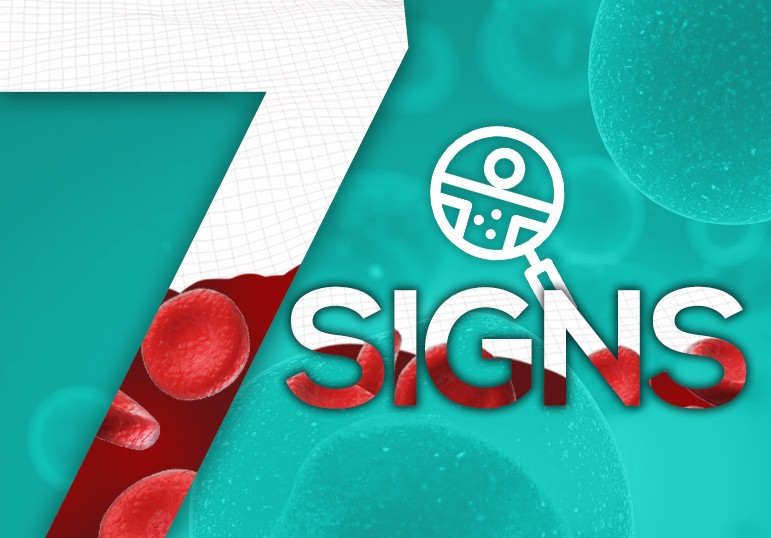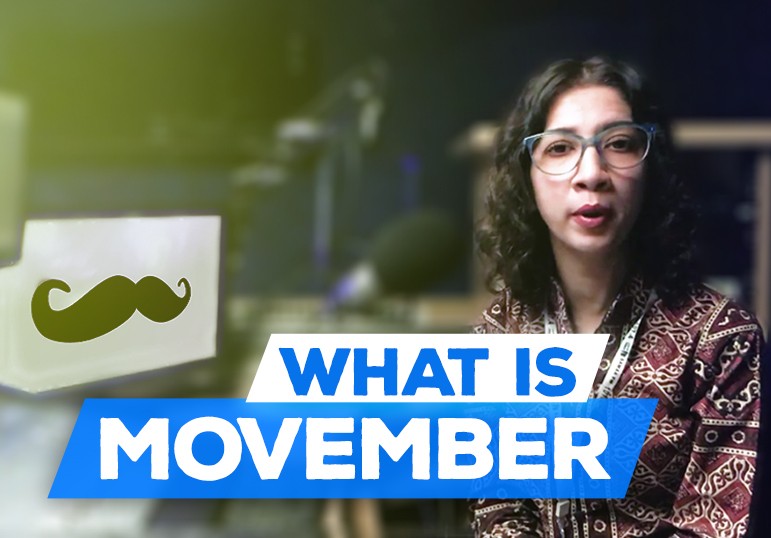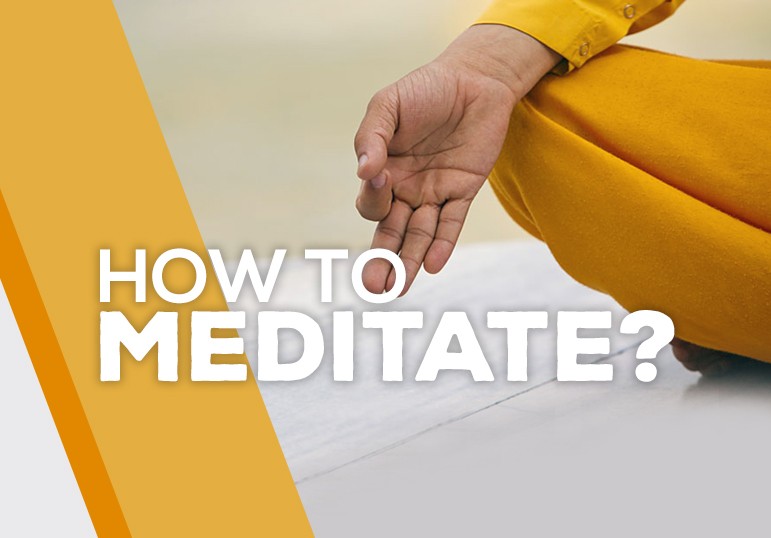
Signs you may have Iron Deficiency
Your body needs a sufficient source of iron to produce haemoglobin, the blood component responsible for transporting oxygen to the different parts of the body. When there is an iron deficiency in a human body, it suffers from a condition called Anaemia. Iron Deficiency usually occurs when your body fails to sustain mineral iron. And if your body doesn’t have enough of this major element, your tissues, due to the lack of haemoglobin won’t get oxygen or be able to work properly.
Here are a few signs to look if you are an iron deficient:
1. Fatigue or Unusual Tiredness
If you feel exhausted all the time even after proper rest, it may be a sign that you are anaemic. It is considered to be one of the most common symptoms of but also the most difficult one to detect. Fatigue happens when your body lack haemoglobin. If your normal fatigue is coupled along with weakness and irritation – get your iron checked.
2. Frequent Infections
Iron plays a key role for a healthy immune system, so lower levels of the minerals can make you more susceptible to infections. Your spleen won’t be able to work properly without enough blood oxygen. That will result into frequent infections.
3. Paleness of Skin
Your body, face, under the eyelids, nails and gums will turn pale if you have iron deficiency. The haemoglobin in red blood cells give blood its red colour, so when you lack haemoglobin during iron deficiency it makes the blood less red and you turn pale.
4. Shortness of Breath
Shortness of breath can be one of the main reasons of iron deficiency. If you experience lethargy while taking long walking trips, get your iron checked.
5. Dizziness or Headaches
An iron-deficient body will prioritise getting oxygen to the brain before it worries about blood getting elsewhere. This lack of division may result as swollen vessels in your brain, and cause extreme pain in your head.
6. Chewing Ice
If you chew ice, there might be a possibility that you are iron deficient. This condition is called ‘Pagophagia’. It is an eating disorder that causes people to eat things with no nutritional value. If you have such craving, you should get your iron checked.
7. Hair Loss
If you are losing more than 120 strands per day, you may have iron deficiency. When your hair follicles do not get the oxygen it needs, they tend to fall out and don’t grow back until the anaemia gets recovered.
If you detect any of these symptoms, get your blood checked; eat foods with good amount of iron including lean meat and dark leafy vegetables etc. And start taking your calcium regularly and combat your iron deficiency.

What is Movember? RJ Sulmeen explains
She began talking about what ‘Movember’ is and how for the whole month of November men do not trim or shave their beards and moustache as a symbol to represent their mental and physical health problems. She further talked about how important it is to create awareness about men, who don’t generally share their problems and ailments with anyone and a perception has been created that they will get over it by themselves. And how stressful it is for them to go through different problems without any help or solutions.
She stressed that emotional and mental health is as important as physical health, especially cardiovascular health in men, and Movember is not just related to spreading awareness about prostrate or testicular cancer, but every issue related to men’s health.
She encouraged everyone to support the cause and spread awareness about Movember. She ended up with a note that “Men like any other gender deserve to be given that comfort, that support, that their physical, mental and emotional health is important, and it needs to be taken care of”.
Watch her below:

How important is Meditation?
Meditation is an approach to train the mind and soul, similar to the way how fitness can train your body. It is a practice which is available to all; it increases happiness, clarity, calmness and reduces stress. When we meditate, we inject over-arching and long-lasting advantages into our lives. We lower our stress levels, we connect better, we improve our focus, we get to know our pain, and get kinder to ourselves.
Among various Buddhist monks, the word “meditation” is equal to sports, and it is extremely difficult for a beginner to sit straight for hours without breaking their focus, as meditation requires different mental skills. Let us walk you through the basics in our mindful guide on how to meditate.
Start with Unbreakable Focus
The easiest way where you can begin your meditation by focusing on your breath and try concentrating on a single point followed by the breath trail, while repeating a single word or a mantra, or by staring into a candle flame. You can start it by sitting still for a few minutes, and keep this practice on loop to make sure you don’t break focus at any point. Once you master this main part, the meditation will become easier.
Stay as Natural as Possible
You can stay as natural as possible. If you have an itch, go ahead and scratch it, feel free to move around and switch your position. This meditation style needs you to be natural and relaxed with any position you take while meditating. You can even fall asleep too, the goal is to establish a connection with a state of ease and if this includes sleep, so go ahead sleep!
Controlling Anger
Often when strong emotions come in to your mind, it tends to stay and usually turns anger. When your mind settles down in meditation, it becomes aware of an emotion which is mind-ful vulnerability, this will be the time where you breathe more and see different colours in your mind. Keep your focus on the lighter shades, it radiates good energy and helps calm your soul.
Ending Meditation
It is important that you come out of the meditation slowly, meditation means you are deeply rested, and you don’t want to wake up from this feeling suddenly. Take some time open your eyes followed by some stretches, move around and start your normal activities. Don’t forget to hydrate after. Happy meditating!

Food and Nutrition Tips during Self Quarantine
The whole world is now being seen into quarantine and different phases of lockdown due to the COVID-19. Currently there is no specific treatment for the virus, but you can often ease the symptoms at home until you get fully recovered.
Since most of us know by now that COVID-19 is a respiratory virus that causes a host of symptoms — from fever, chills and shortness of breath to body aches and loss of taste or smell, excessive fatigue, muscle pain, sore throat and some GI symptoms like diarrhea. And it is definitely not a food borne disease, so there is no evidence that the virus can be swallowed through food. However, if you have the virus. You should practice safe food preparation procedures in order to stay healthier during the quarantine period.
Here’s what we have lined up:
Hydration
Hydration is important, drinking water and other forms of liquids are highly beneficial if you have high fever. Try to drink plenty of fluids – these are all good options:
-Water
-Coconut water
-Honey and tea
-Fruit juices
-Chicken broth
-Electrolyte drinks
These drinks can be comforting and give you the energy to feel better sooner; tea with honey can calm a cough. You can skip icy drinks for a while, but staying hydrated in the key to self quarantine.
Immunity Boosting Meals
There are no specific diet restrictions with COVID, so you can eat anything you like, but we would suggest that you would go for the food type that will boost your immunity during and even after you get recovered. So certain foods can help with that.
A few immunity boosting options include:
Vitamin C and E
Vitamin C is important when you have common cold or flu. It acts as an antioxidant; a good source of Vitamin C includes broccoli, mangoes, oranges, strawberries and red peppers. Whereas energy sources with Vitamin E can be extracted from Nuts, seeds and spinach. These resources can help build the cells back, which are damaged by the virus.
Zinc
Zinc is found in various seeds, pumpkin, lentils, beans and sesame seeds, which can help boost the white blood cells and act as a protective shield against the virus.
In general whether you are sick or healthy, you should always incorporate at least three servings of fresh fruits and vegetables in your daily meal in order to stay active and fit. Stay clear of the processed food as it contains a good amount of salt. Find indoor activities and keep yourself motivated and monitored throughout to combat the virus.

Breast Cancer Awareness Month at SAMAA FM
She began by talking about that Breast Cancer is a leading form of cancer among women. But there still remains a great deal of stigma and taboo around it especially in Pakistan. But Pakistan has come leaps and bounds in terms of Breast Cancer Awareness. A growing group of women have come forward who are aware, practice self screening, and do mammography (chest xray) once a year. However another group of females exist who still neglect and ignore this issue.
There are 80 to 85% of breast cancer cases where the cause of disease cannot be ascertained. 5 to 10% of cases have a genetic disposition. For the rest of the 5 to 10% cases, obesity seems to be a leading cause of Breast Cancer. Sedentary lifestyle, smoking and alcohol consumption also play a part to increase the risk factor in females.
Among the reasons for low detection of breast cancer is, it causes no pain in the early stages. Pain only occurs in the late stages where the cancer has already spread to the other parts. According to Dr. Sana, the symptoms of breast cancer include lumps in the breast or armpit, dimpling of breast skin, distortion in the shape of the breast, recent changes in the size of the breast, inverted nipples, asymmetry of the nipples or blood discharge from the nipples. If any of these symptoms exist, a visit to a Doctor becomes essential.
The best thing about breast cancer is that it can be detected on the surface of the skin and its early detection leads to almost 100% cure. Out of all the body cancers, breast cancer the friendliest cancer since it is completely treatable as long as it is detected in the early stages. It is not a sign of death.
Also Read:




